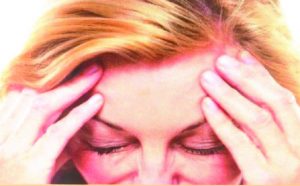 They Could be Suffering from Binocular Vision Dysfunction (BVD):
They Could be Suffering from Binocular Vision Dysfunction (BVD):
Binocular vision is the process where the two eyes (which are controlled by the brain and four cranial nerves) team together to create a single, 3–dimensional, fused image, and then team together to follow that image as it moves. BVD occurs when there is a problem with any part of the binocular vision system that leads to difficulty maintaining fusion or image following. The symptoms of BVD stem from a misalignment but also from the body’s struggle to maintain a single, 3-dimensional fused image. They include not only the symptoms of diplopia, but many other symptoms not usually associated with BVD.
Symptoms of a Patient that may have (BVD):
The number & severity of symptoms are different for each person.
Pain: headaches, face ache, eye pain or pain with eye movement, neck ache, upper back & shoulder pain, head tilt
Vestibular: dizziness, lightheadedness, nausea, unsteadiness/drifting to one side while walking, lack of coordination, motion sickness
Psychological: anxiety, feeling overwhelmed or anxious in crowds or large spaces (e.g., malls, big box spaces, etc.)
Reading: difficulty/fatigue with concentration, difficulty with reading and comprehension, skipping lines while reading, losing one’s place while reading
Vision: double vision, blurred vision, overlapping or shadowed vision, light sensitivity, difficulty with glare or reflection, closing/covering one eye to make it easier to see
Many people with Traumatic Brain Injury (TBI) develop a small amount of eye misalignment from their injury that causes these symptoms.
What is the solution?
iSee VisionCare patients, under the care of Dr. Sonneberg, undergo a detailed and thorough examination of their vision, including assessments for small amounts of eye misalignment (the NeuroVisual evaluation). Problems with near vision, far vision and alignment will be corrected using prismatic glasses, resulting in a reduction (or sometimes elimination) of their symptoms.
Practical Application
The average patient experiences a 30-50% reduction of symptoms on the same day of treatment with an average reduction of 80% by the end of treatment.
What is the solution?
I have referred over a hundred TBI patients to VSM. This is one of the best medical improvements we have had to treat brain injury patients in decades.
Jennifer Doble,M.D., PM&R Physician, TBI Specialist
Hear additional medical colleagues share their experience with BVD on video BVDDoctorVideo.com
Learn more at www.iseevisioncare.com
Check Also
Trusted Homecare Agency: Serving Veterans with Free Supplemental Home Healthcare
When it comes to healthcare, veterans deserve the best care possible. For veterans seeking in-home …
 South Florida Health and Wellness Magazine Health and Wellness Articles
South Florida Health and Wellness Magazine Health and Wellness Articles




